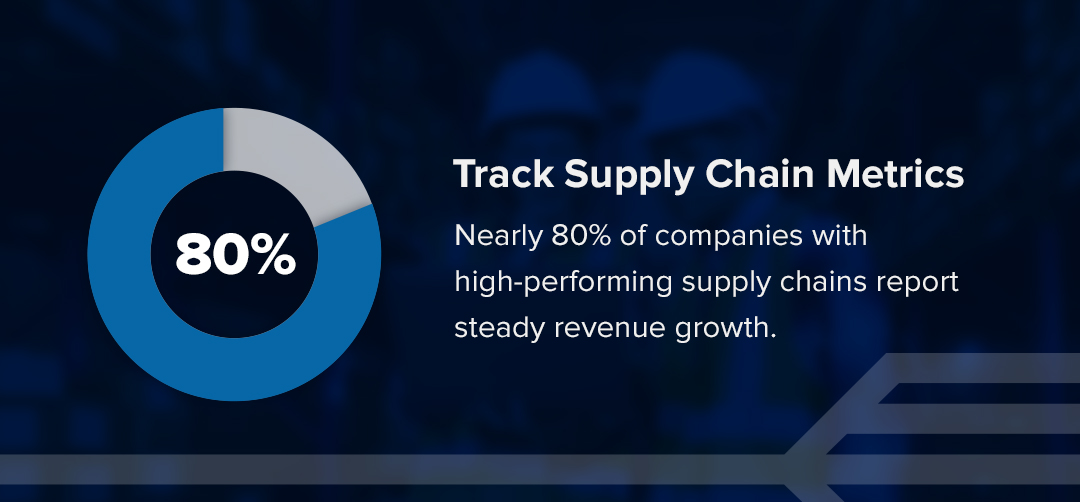
In efficient supply chain management, success depends on optimization, agility and responsiveness to sudden changes. Effective management entails reducing overheads, minimizing lead times and improving inventory levels. Streamlining processes and enhancing the overall flexibility of operations to adapt to market fluctuations and unforeseen changes quickly are also essential.
Seamless operations result from correctly implementing supply chain best practices in various areas to ensure efficient service delivery and boost profits.
1. Diversify Supplier Relationships
Supplier diversification fosters resilience and empowers supply chain managers to swiftly pivot and adapt to changing circumstances to maintain operational continuity. This competitive tactic helps organizations stay ahead by relying on several suppliers to mitigate risks and continue to grow in a dynamic market.
This proactive approach bypasses bottlenecks and the impact of unforeseen events like natural disasters, geopolitical turmoil or other supplier-specific issues.
2. Optimize Inventory Management
To excel in supply chain operations, managers must actively balance inventory levels to meet consumer demand while keeping logistic costs low. Steering clear of understocking, overstocking and backorders results from proper inventory management. By accurately forecasting demand and using just-in-time principles and advanced inventory management systems, professionals can adjust stock levels efficiently and reduce excess stock. Here are some additional benefits:
- Better delivery turn-around time: Tracking product distribution is simpler with optimized inventory management, a benefit that is particularly useful during seasons of high product demand. An automated, tech-enabled inventory strategy also gives management valuable insight into their shipping strategy’s performance.
- Lower operational costs: Storage and warehousing costs are cut when inventory management is at its peak.
- Optimized inventory: Knowing which SKUs are in the warehouse or distribution center helps inventory accounting, profit generation and meeting consumer demands run smoothly.
- Improved customer satisfaction: With more insights into which products to keep in stock and in which warehouse location, organizations can adequately meet consumer needs and fulfill orders in good time.
3. Improve Visibility and Transparency
Understanding the whole journey, from procurement to product delivery, helps give supply chain managers a heightened ability to identify potential issues quickly and optimize opportunities to bypass these challenges. Consistent communication with stakeholders is the first step in creating transparency and visibility to improve supply chain management.
Active engagement with suppliers, manufacturers and logistics partners — focusing on timely updates and reliable documentation of movement in the supply chain — plays a pivotal role in the success of this strategy. Modern technology like the Internet of Things (IoT) and a blockchain provides transparent supply chain data. Organizations can collaborate to foster a more efficient and responsive supply chain by sharing this information and associated analytics with stakeholders. Sharing information ensures you notice potential disruptions early, allowing for swift mitigation strategies when needed.

4. Track Supply Chain Metrics
Tracking key metrics is vital for maintaining a competitive edge and improving supply chain practices. Nearly 80% of companies with high-performing supply chains report steady revenue growth. To stay on top of performance, peruse the following metrics closely:
- Perfect order rates: Monitor error-free orders. Calculate order performance through this formula: (Percent orders complete) x (Percent of orders delivered on time) x (Percent of orders with accurate documentation) x (Percent of orders without damage) x 100.
- Warehousing costs: Use software to monitor costs and frequent audits to keep warehousing expenses in check.
- Inventory turnover: Use this metric to identify overstocking and high-demand periods and conduct adequate forecasting.
- Inventory accuracy: A high rate may helpreduce stock outages and overall inventory carrying costs.
- On-time shipping: Measure the ratio of orders that ship out on or before the estimated date to track delivery performance with this formula: (Number of on-time deliveries) x (Total items) x 100.
- Rate of return: Gain insight into growth potential in the supply chain from the return rate metrics.
- Inventory velocity: See how often inventory needs replenishment during a fiscal period to ensure the organization adequately meets demand.
- Inventory-to-sales ratio: Measure effective conversion of inventory into sales.
5. Invest in Sustainability
Up to 43% of consumers expect organizations to be accountable for their operations’ environmental impact. To create a supply chain that minimizes environmental impact, maximizes social responsibility and maintains economic viability, organizations must start by assessing their supply chain to find improvement points. Supply chain professionals must:
- Evaluate suppliers: Evaluate all suppliers for eco-friendly practices to ensure sustainable sourcing. Share organizational expectations for responsible suppliers that include water usage, recycling, energy consumption, and the health and safety of employees.
- Reduce carbon footprint: Aim to reduce carbon emissions through efficient logistics and minimizing waste generation.
- Circular economy: Eliminate waste by distributing products with reproduction cycles that can easily be recycled into the production cycle.
Long-term success comes from environmental, social and economic goals that align with the supply chain. By embracing sustainability in the supply chain, organizations gain a competitive edge as they contribute to a healthier planet — a characteristic many consumers prefer in the brands they support.
6. Practice Risk Mitigation and Compliance
To excel in risk mitigation within the supply chain, businesses must adopt a proactive approach. Start by identifying known risks and unknown risks through scenario planning. When stakes are documented, monitor key performance indicators in real time to detect deviations from the established norms. It is also important to conduct risk assessments at the start of every major supply chain project, documenting the complete risk management process that is in place. Investing in compliance management software can help you track and adhere to industry regulations and routinely audit your organizational processes.
Some risk mitigation tactics include adding nearshore sources to lessen delays that result from certain known risks. Cloud-based software that automates processes and keeps detailed records of procedures and documentation allows organizations to address potential risks as they arise or from any location. This swift action minimizes downtime and boosts reliability.
7. Analyze Meaningful Data
When looking into what supply chain best practices are, you should acknowledge that they are about more than the ebb and flow of stock. Collecting data from inventory levels, transportation costs and customer demand can help you identify trends, patterns and potential inefficiencies. You can use statistical analysis to pull up any correlations, such as changes in transportation routes impacting delivery times. Keep the following types of analytics in mind:
- Cognitive analytics: Advanced technologies like machine learning can automate processes and solve problems.
- Descriptive analytics: Combine internal and external metrics to identify patterns and correlations.
- Prescriptive analytics: Artificial intelligence can convert data into actionable insights that allow the supply chain to achieve specified results.
- Predictive analytics: Align strategies to adjust for high product demand periods by forecasting future demand based on previous sales records.
Partner With EMO Trans
Supply chain leadership must find innovative ways of managing the supply chain to optimize business operations. Understanding what the best practices in the supply chain are can help maximize operational efficiency while maintaining high-quality standards and customer satisfaction.
EMO Trans understands your logistics needs and goals. With over 50 years of experience in global logistics, our team is proud to offer competitive pricing and outstanding service to boost your supply chain best practices. Contact us today to learn how our state-of-the-art information and data systems can provide the information you need to track your stock movement.

